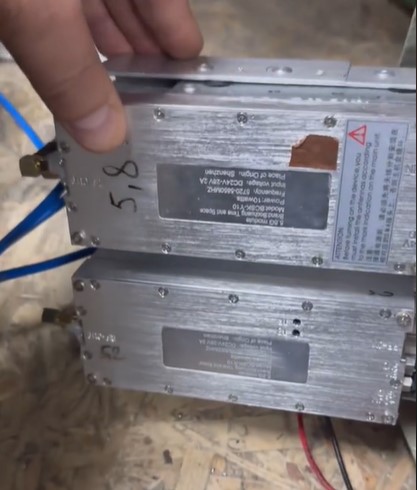The recent eDiscovery of Chinese components in Russian anti-drone rifles, specifically in the device PARS-C “Stepashka,” highlights the importance of sanctions and international control over the supply of technologies and components that may be used for military purposes. Ukrainian military engineers, who captured the device during assault operations, found it contained elements manufactured by Chinese companies.
The PARS-C “Stepashka” anti-drone rifle was developed by the Russian company “RUSGEOKOM,” one of the largest suppliers of precise measurement solutions for military and civilian needs. The device is designed to combat unmanned aerial vehicles (UAVs) that may pose a threat to security or violate airspace in areas where their presence is unacceptable.

With a range of up to 1500 meters and a power output of up to 50 watts, the “Stepashka” is an effective tool for neutralizing commercial drones, forcing them to land or return to their starting point. Thanks to its algorithms, the device can adapt to various drone models, ensuring its versatility in battlefield use.
This discovery has significant implications for the further development of sanctions policies. Chinese involvement in the production of components for Russian military technology could become the subject of additional international investigations and sanctions. It is worth noting that some Chinese companies have already been sanctioned by the United States for their role in supplying materials for Russia’s military needs, but there are still mechanisms in place to circumvent these restrictions.
The lack of technological autonomy in key areas, such as the production of components for anti-drone systems, signals serious problems within Russia’s defense industry. While Russia is actively developing its technologies, its military systems remain dependent on the import of critical components, particularly from China, which allows for the bypassing of sanctions.
On the other hand, international sanctions and bans on the supply of technologies and components to Russia are forcing the country to seek new supply channels. China, as one of Russia’s main trading partners, has become an important player in this chain, raising questions about its role in global security. This case serves as a stark reminder of the importance of global control over the supply of dual-use technologies that could be used for military purposes.
Technological restrictions and political initiatives need to be strengthened to ensure the effective isolation of Russia from key sources of military component supplies and to prevent the circumvention of sanctions through intermediary countries.
Russia demonstrates the ability to adapt to new conditions, which allows it to maintain strategic autonomy in the military sphere. However, it is worth noting that this adaptive effort is not without obstacles. Funding issues, a lack of access to advanced technologies, and internal economic difficulties may, over time, create serious barriers to the further development of military infrastructure.








